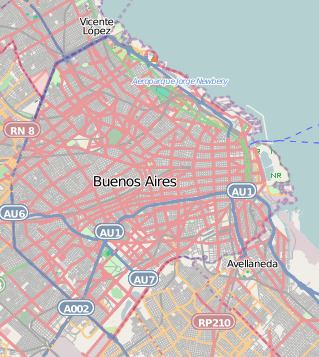Type Planetarium Website Official Website Phone +54 11 4771-6629 | Architect Enrique Jan Opened 20 December 1966 | |
 | ||
Established December 20, 1966 (1966-December-20) Location Palermo Woods, Palermo, Buenos Aires, Argentina Address Av. Sarmiento s/n, 1425 CABA, Argentina Hours Closed now Thursday9:30AM–5PMFriday9:30AM–5PMSaturday11:30AM–7PMSunday11:30AM–7PMMondayClosedTuesday9:30AM–5PMWednesday9:30AM–5PM Similar Buenos Aires Botanical, Parque Tres de Febrero, Buenos Aires Japanese, Buenos Aires Zoo, Floralis Genérica | ||
Iluminaci n del planetario galileo galilei wmv
The Galileo Galilei planetarium, commonly known as Planetario, is located in Parque Tres de Febrero in the Palermo district of Buenos Aires, Argentina.
Contents
Fancam ggag live tokio hotel planetario galileo galilei bs as argentina 13 11 14
History
The idea that Buenos Aires should have a planetarium began to take shape in 1958 by an agreement between Socialist Councilman José Luis Peña and the municipal Secretary of Culture, Dr. Aldo Cocca. Construction began under the direction of architect Enrique Jan in 1962, and it was inaugurated on December 20, 1966. The first function was carried out on June 13, 1967 for the students of "Escuela Comercial Nº 1" of Banfield and "Santa Unión de los Sagrados Corazones" of Capital Federal. Professor of geography and mathematics Antonio Cornejo showed them the sky over Buenos Aires, Argentine Antarctica and the South Pole, as well as demonstrating the orientation of the southern cross. The facility was officially opened to the public on April 5, 1968.
Structure
The building has five floors, six staircases and a 20 metres (66 ft) diameter room with 360 seats. The inside of the 20m semispherical dome is covered with reflective aluminium.
The planetarium (Zeiss projector Model M V) itself is located in the centre, it has over 100 projectors and is approximately 5 metres (16 ft) in height and 2.5 tons in weight. It consists of a cylindrical framework with independent projectors for the Moon, the Sun and the visible planets (Mercury, Venus, Mars, Jupiter and Saturn) and two spheres in the extremes that project 8,900 stars, constellations and nebulas.
